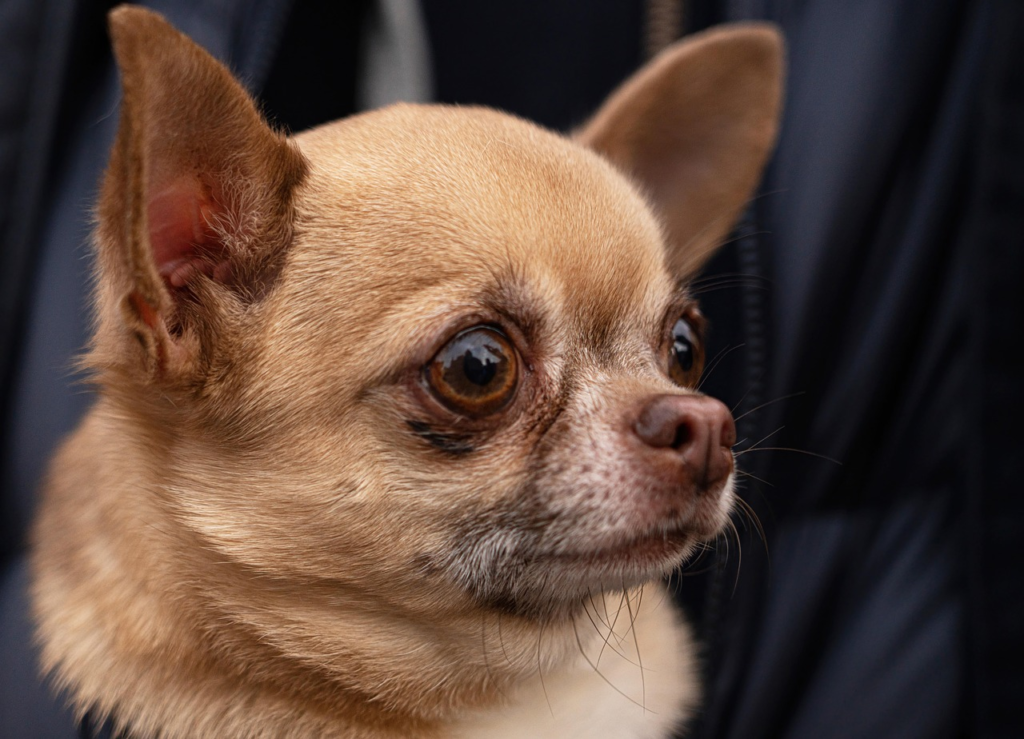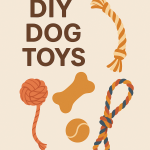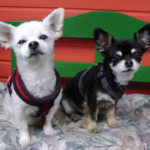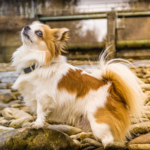Ever wondered why some Chihuahuas love new places while others hide in fear? It’s key to know how to socialize your Chihuahua in new spots. These tiny dogs face special challenges and joys when they meet new places. This guide will show you how to introduce your Chihuahua to new places safely and effectively. You’ll learn how to make them feel secure and confident, ready to explore the world with you.
The Importance of Chihuahua Socialization New Environments
Socialization is key for a Chihuahua’s growth. It means exposing your dog to new things. This helps them learn how to be around other animals, people, and places. Knowing how Chihuahuas adapt is crucial for their social skills later on.
Understanding Socialization
Socialization is more than just meeting new friends. It’s about giving your Chihuahua a wide range of experiences. By taking them to different places, they learn to handle new situations with ease. This includes introducing them to new sounds, smells, and sights, making them well-adjusted dogs.
Benefits of Socializing Your Chihuahua
Socializing your Chihuahua has many benefits. It makes them more confident and less anxious. It also helps with their behavior and emotional strength. Plus, it can make them healthier by reducing stress, which means fewer behavioral problems.
By following good socializing tips, your Chihuahua will be happier and healthier. They’ll be more adaptable and safe in new places.
| Benefit | Description |
|---|---|
| Increased Confidence | A socialized Chihuahua typically displays greater confidence when faced with new experiences. |
| Improved Behavior | Regular socialization can lead to fewer behavioral issues as dogs learn acceptable interactions. |
| Reduced Anxiety | Encounters with different people and environments help decrease anxiety over time. |
| Enhanced Health | Lower stress levels generally contribute to better overall health in dogs. |
| Better Adaptability | Well-socialized Chihuahuas are more adaptable to changes in their environment. |
Recognizing Your Chihuahua’s Behavior in New Situations
Understanding how your Chihuahua acts in new places is key to their social growth. Knowing when they might feel scared or anxious helps a lot. This knowledge lets you help them adjust better and keep them safe.
Common Signs of Fear or Anxiety
Chihuahuas show their feelings through body language. Watching how they act can tell you a lot about how they feel in new places. Here are some signs to look out for:
- Trembling or shivering can show they’re upset.
- Cowering or hiding means they’re scared.
- Growling might mean they’re getting ready to defend themselves.
- Trying to escape shows they’re really stressed out.
Spotting these signs of fear in dogs helps you understand how your Chihuahua feels. This is key to helping them with chihuahua anxiety. By easing their stress, you make new places better for them. Being calm and patient helps them get used to new things, which is good for their social skills.
Preparing for Introductions to New Environments
Introducing your Chihuahua to new places is key to their social skills. It’s important to set clear expectations before you start. This helps make the process easier for everyone.
Setting Realistic Expectations
When getting your Chihuahua used to new places, remember that progress takes time. Start with small steps and set achievable goals. Here are some tips for a smooth introduction:
- Choose Quiet Locations: Begin in quiet places to avoid overwhelming your Chihuahua.
- Familiarize with the Environment: Let your Chihuahua explore different textures, sounds, and sights at their own speed.
- Short Duration: Keep the first visits short, then slowly increase the time as they get more comfortable.
- Use Familiar Items: Bring your Chihuahua’s favorite toy or blanket to make them feel safe.
- Stay Attentive: Watch for signs of stress or anxiety and adjust your approach as needed.
Having the right tools is also crucial for a successful introduction. Bring treats and use familiar commands to encourage good behavior. This structured method helps your Chihuahua adjust and feel more comfortable in new places.
| Stage | Activity | Expected Outcome |
|---|---|---|
| 1 | Introduce to a quiet park | Increased confidence with new sounds |
| 2 | Visit a pet-friendly café | Comfort around other pets and people |
| 3 | Explore a busy street during off-peak hours | Adaptation to moving crowds |
| 4 | Short visits to pet stores | Familiarity with different environments |
By following these steps, you can make introducing your Chihuahua to new places easier. This makes the experience better for both you and your pet.
Gradual Exposure Techniques for Your Chihuahua
Introducing your Chihuahua to new places can be rewarding. It helps them adapt better. Use gradual exposure techniques for controlled introductions that keep your pet comfortable. This way, you can slowly introduce them to different settings safely.
Controlled Introductions: Step by Step
Start with places they know well, then move to busier spots. Use short sessions to help them get used to it. Make sure each experience is positive. Watch for signs of stress and be ready to go back if needed.
This step-by-step approach helps your Chihuahua adapt and gain confidence in new situations.
Using Positive Reinforcement
Positive reinforcement is key during these sessions. Use treats, praise, and petting to reward calm behavior. This boosts your Chihuahua’s confidence. Keeping track of small successes makes the experience better.
Linking positive moments with new situations strengthens your bond. It also helps your Chihuahua socialize successfully.
CONCLUSION
Introducing your Chihuahua to new environments is essential for their socialization and overall well-being. Start by gradually exposing them to different settings, ensuring each experience is positive and stress-free. Use treats, toys, and comforting words to help them associate new places with good feelings. Whether it’s a park, a busy street, or a friend’s home, take it slow and allow your Chihuahua to explore at their own pace.
Consistency is key—frequent, short outings will build their confidence over time. By patiently guiding your Chihuahua through new environments, you’ll foster a more adaptable and social pet, ready to enjoy a variety of experiences with you.
FAQ
Q: What is the best way to start socializing my Chihuahua in new environments?
A: Start by taking your Chihuahua to quieter places where they feel safe. Then, slowly introduce them to busier areas as they become more confident. Use treats and praise to encourage good behavior.
Q: How can I tell if my Chihuahua is anxious in a new situation?
A: Look for signs like trembling, cowering, growling, or trying to escape. These behaviors mean they’re feeling anxious. Pay attention to them to help ease their fears and make them feel more comfortable.
Q: Why is socialization so important for my Chihuahua’s development?
A: Socialization makes your Chihuahua more adaptable and confident. It lowers anxiety, betters their behavior, and boosts their health. A well-socialized dog can handle new places and situations better.
Q: How long should I expect the socialization process to take?
A: Socialization is a long-term process. Every Chihuahua is different, so be patient. Celebrate their small successes along the way.
Q: Can my Chihuahua learn social skills through play with other dogs?
A: Yes, playing with other dogs can teach your Chihuahua social skills. Watch over their playtime to help them learn right behaviors and gain confidence with other dogs.
Q: What tools can I use to help with my Chihuahua’s socialization in new surroundings?
A: Use high-value treats, a comfy leash, and positive commands. These tools help you plan a structured approach to introducing your Chihuahua to new places.
Q: Are there specific techniques for introducing a Chihuahua to new environments?
A: Yes, controlled introductions are crucial. Begin with short visits to new spots, focusing on your Chihuahua’s comfort. Slowly increase their time in new places as they get more at ease.
Source Links
- Socializing your dog – https://www.animalhumanesociety.org/resource/socializing-your-dog
- How to Socialize an Adult Dog and Why It’s Never Too Late – https://www.houndslounge.com/blog/how-to-socialize-an-adult-dog-and-why-its-never-too-late/
- Socialization: The Key to a Confident and Well-Behaved Dog – https://www.24hourdogdaycare.com/blog/socialization-the-key-to-a-confident-and-well-behaved-dog/





